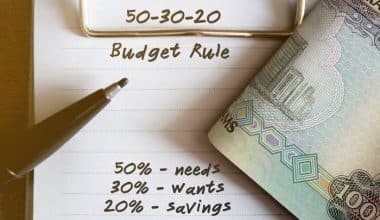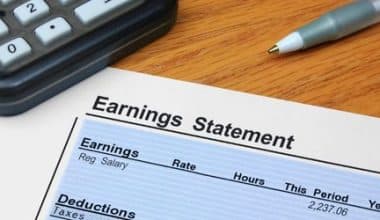For beginners, a secured credit card is a great option to build a credit history. Student-first credit cards are also suitable for students in schools, offering lower credit limits and benefits tailored to their needs. A no-annual-fee credit card with rewards is another option for those looking to build credit without a deposit. Ultimately, the best credit card will depend on your financial situation and spending habits, so compare options and read the terms and conditions before making a decision. This article will guide you on the best first credit card, especially for students in schools and young adults
The First Credit Card
The first credit card was introduced by Diner’s Club in 1950. Initially, it was intended for use at restaurants and hotels, and it was not widely accepted. However, over time, the use of credit cards has evolved and expanded to include a wide range of businesses, including retailers, gas stations, and online merchants. Interestingly, the first card was not intended for students in schools or young adults, but rather for business travelers who needed a convenient way to pay for expenses while on the road. However, as the use of cards has become more widespread, students and young adults have also begun to use credit
The Credit Card That Is Best for a First-Time User
For a first-time card user, it’s important to start with a card that is easy to qualify for and has minimal fees. One of the best options for first-time users is a secured credit card. A secured card requires a security deposit, which serves as collateral for the credit limit. This can be a good option for first-time users because it helps to minimize the risk for both the card issuer and the user. Additionally, many secured cards report to the credit bureaus, which can help build credit history. Card management doesn’t require a finance degree, and a little credit education goes a long way to helping first-time card users avoid financial disaster.
10 Tips for First-Time Card Users
Consider the following tips as a beginner:
#1. Don’t Overcharge
Don’t spend more than you can pay off quickly on the cards. Card users may be tempted to overspend, but this can quickly lead to debt.
#2. Always Pay on Time
If you only charge what you can afford, you can pay your card bills in full each month. Even if you fall one month short, make at least your minimum payment before your due date. Card users shouldn’t fear being late. Late fees and APR increases may result from being a few days behind (called a penalty APR).
#3. Don’t Pay Minimums
Thus, making at least the minimum payment on time every month requires a lot of work. Minimal payments invite trouble. Most cards have a grace period between the statement due and the bill due. You won’t be charged interest if you pay off your balance before the grace period ends, which is the due date. First-time card users who swipe first and budget later can quickly become indebted. Avoid the interest-fee trap by only using the cards for purchases you can afford each month.
#4. Understand Pricing and Avoidance
When you only have a hammer, everything looks like a nail. First-time card users view their cards as a one-size-fits-all financing solution. They’re not. It works for most daily purchases. Some things shouldn’t be on plastic. These cards aren’t good for long-term debt; loans are.
#5. Select Cards Carefully
Choose a credit card that fits your needs and spending habits first. Every card has fine print, but sign-up bonuses and big rewards can entice first-time users. Students’ credit card offer rewards and are the best for students in most schools. Secured cards are good for non-students. Secured cards are like other credit cards except for the initial deposit, which is refundable. Some secured cards reward purchases.
#6. Avoid Fees
Your cardholder agreement lists all card fees on a single page. Annual fees and interest fees are familiar to first-time card users. Your card issuer may charge other fees. Late fees are common if you pay after the due date. A returned-payment fee may also apply.
#7. Check Statements for Errors
Card bills arrive monthly. Users may check the balance and toss the statement. Instead, go over the charges. Beware of card fraud, even for first-time users. Even a small unauthorized charge of a few cents should be reported because the crook may be testing many card numbers before making big charges on them.
#8. Check Credit Reports Annually
Credit matters in finance. Card, loan, and mortgage lenders check your credit report. Equifax, Experian, and TransUnion provide U.S. credit reports. Your credit report lists your debts, repayment history, and credit accounts, including credit cards. These users have little credit history, so their credit reports won’t show much activity. Checking your credit reports at least once a year is crucial to ensuring accuracy.
#9. Monitor Credit Scores for Warning Signs
Your credit scores reflect the condition of your credit reports because they are based on them. First-time card users who are building their credit can expect 5–10 point fluctuations. Your score fluctuates with credit balances and utilization rates. But what if your credit score changes drastically? Your credit reports have changed significantly.
#10. Ask for Help
Beginners often don’t speak up when they’re in trouble. Don’t just assume that card agreements are binding. If you can’t pay, call your card company. A student credit card is another good choice for people who have never used a card before. These cards are made for students, so they usually have lower credit limits and less strict requirements for getting approved. Some student cards include the Discover it Student Cash Back, which gives 5% cash back on rotating categories every quarter and 1% cash back on all other purchases, and the Journey Student Rewards from Capital One, which gives 1% cashback on all purchases and a 25% bonus on cash back earned each month you pay on time.
First Credit Card Limit
The first credit card limit was set at $300 for the Diner’s Club card, which was introduced in 1950 by Frank McNamara and Ralph Schneider. This card was initially created for use at restaurants, and it was designed to help build the credit history of young adults and students who may not have had much credit experience.
At the time, young adults and students often struggled to establish credit and were often denied traditional loans. The Diner’s Club card offered them a way to build their credit by showing that they could responsibly use and pay off credit. Additionally, the $300 limit was set to be low enough that it would be achievable for most young adults and students to pay off each month, helping them to establish a good credit history.
How a Credit Card works for the First Time?
When using these cards for the first time, particularly for young adults and students in schools, there are a few key steps to follow to ensure that the process is smooth and successful in building credit.
#1. Choose a Credit Card
The first step is to choose a card that is suitable for building credit. There are many different types of credit cards available, including those for students, those with rewards programs, and those with low-interest rates. Research the different options and choose a card that meets your needs and will help you build it.
#2. Apply for the Card
Once you have chosen a credit card, you will need to apply for it. This usually involves filling out an application form, which may be done online or in person. The application will ask for personal information, such as your name, address, and income, as well as information about your employment and credit history. It’s important to have a good credit score and a steady income to be approved for it.
#3. Wait for Approval
After you have submitted your application, the credit card issuer will review it and make a decision about whether to approve your application. This process can take several days or weeks. If your application is approved, the issuer will send you your card along with the terms and conditions of the card.
#4. Activate your Card
Once you receive your credit card, you will need to activate it. This is usually done by calling the number on the card or by visiting the issuer’s website. Once your card is activated, it is ready to use.
#5. Use your Card
Once your credit card is activated, you can start using it to make purchases. To do this, you will need to present your card to the merchant, who will then run it through a card reader to process the transaction. Be sure to keep track of your spending so you can pay off your balance in full at the end of the month. This way, you will avoid late fees and interest charges and build credit.
#6. Make Payments
Finally, you will need to make payments on your card balance to avoid late fees and interest charges and continue building credit. To sum up, young adults and students who want to use cards for the first time need to choose a card that will help them build their credit, fill out an application and wait for approval, activate the card, use it to make purchases, and pay off the balance on time to avoid late fees and interest charges and to keep building credit.
How Beginners Get Credit Cards
One option for students and young adults looking to build credit is to apply for secured credit cards. A secured card requires a deposit, which acts as collateral for the credit limit. This can be a good option for young adults or students at the school who have little or no credit history.
Another option is to become an authorized user on an existing credit card account of a parent or guardian with a good credit history. This can help establish credit history as well. Additionally, students can also consider student credit cards, which are designed for students and usually have lower credit limits and less stringent approval requirements.
Is an ATM card a Credit card?
An ATM card and a credit card are not the same. An ATM card is used to access funds in a linked account, while a credit card allows the cardholder to borrow money up to a certain limit.
How Difficult Is It to Obtain a Card?
Getting your first credit card can be a trying experience, particularly for students and young adults who may not yet have a long credit history established in their names. When applying for a card, many financial institutions demand that applicants provide proof of income.
Students have the option of applying for a student credit card, which is tailored to the needs of students in schools and typically has more lax requirements for approval. Students can establish a positive credit history by using these cards because they typically offer rewards or cash back on purchases made with the card. Becoming an authorized user on the card of a parent or guardian is another choice for young adults who are not yet legal adults. This can be beneficial to the process of building credit because it demonstrates a positive payment history on the account.
Making payments on a secured card on time and consistently can be another way for young adults and students to build credit. In order to open a secured credit card account, a security deposit is required. Establishing a positive credit history in this manner can be an excellent way to avoid taking on an excessive amount of debt. Students and young adults can obtain their first card in one of three ways:
- By using student credit cards.
- By becoming an authorized user on the credit card of a parent or guardian.
- By using a secured credit card to build their credit history.
Is It Possible to Obtain a Credit Card With No Income?
Credit card companies will almost certainly decline your application if you have no income. Legally, they need to consider your ability to repay what you borrow. With no income, it’s hard to argue that you can make credit card payments.
It may be possible to get a credit card with no income if you are a young adult or student, but it would likely be a secured credit card. However, it requires a security deposit, which serves as collateral for the credit limit. Additionally, students with credit cards may also have lower credit limits compared to regular cards, but they may have other benefits, such as cashback rewards or lower interest rates. It is always recommended to check with different financial institutions and compare their requirements and offers.
FAQs
What credit card is easiest to get?
The Credit One Visa Card is the most straightforward unsecured card to obtain. It is available to those with poor or no credit. In addition, cardholders receive 1% cash back on selected transactions.
How much of a $500 credit card should you use?
Lenders advise that you use no more than 30% of your credit limit.
What is the lowest card limit?
If your first credit card is from a retail store, your credit limit maybe $100. If it’s from a bank or card business, it may be $500.
Related Articles
- HOW TO BUY A HOUSE WITH NO MONEY: For First-Time Buyers
- FIRST CREDIT CARD: What It Is and All You Need to Know
- NEW HOMEOWNERS TAX CREDIT: What It is And The Eligibility
- TAX CREDIT FOR BUYING A HOUSE: First-Time HomeBuyers in 2023
- BEST CAR INSURANCE IN FLORIDA: Best Car Insurance 2022






